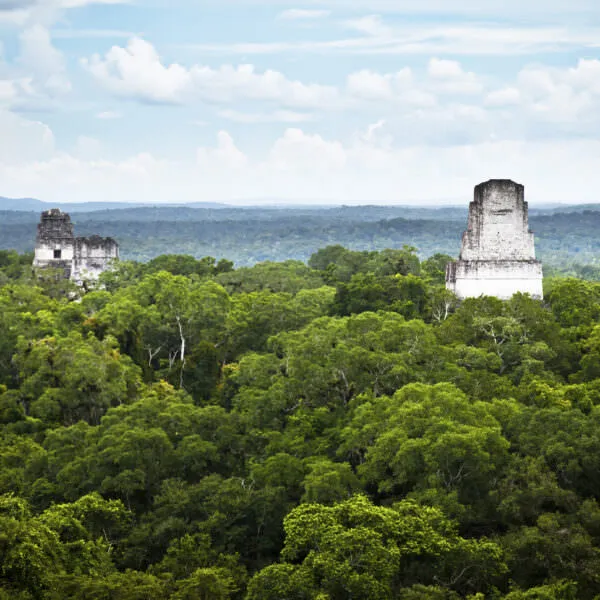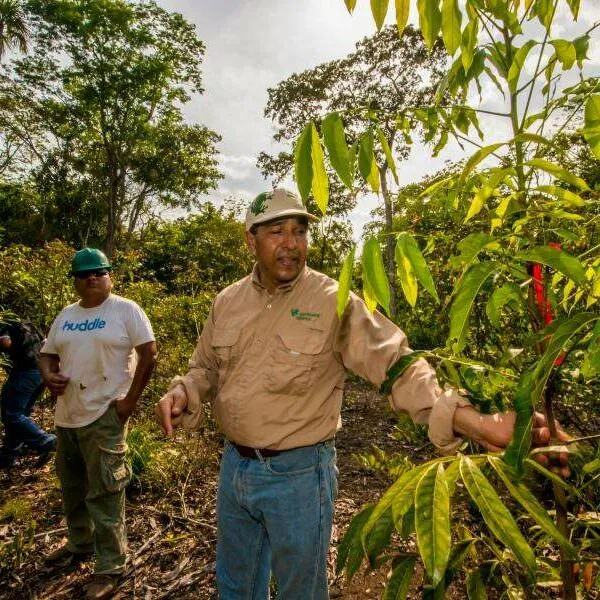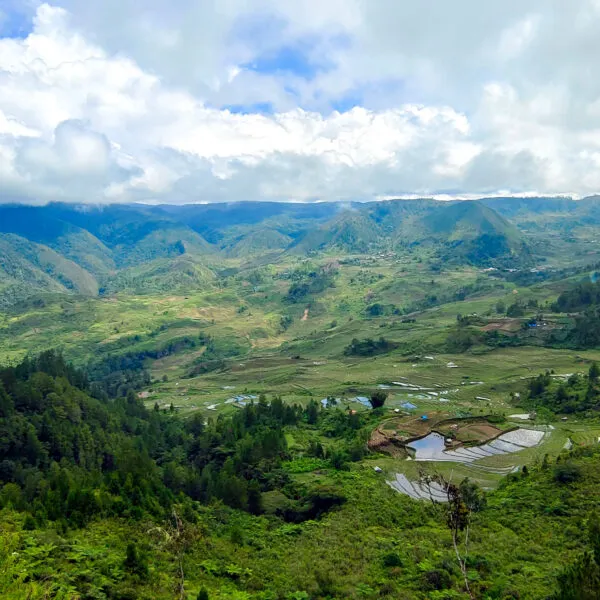When tackling complex problems, collaboration can make all the difference. The Rainforest Alliance was founded on this idea, and our Forest Allies initiative leverages the enormous power of our partnerships to support forest communities as they address the climate crisis and combat deforestation.
By forging a powerful alliance between companies, local communities, regional and international organizations, governments, and other stakeholders, we amplify the efforts of those who live and work in the world’s most critical forest ecosystems—whether these rural communities are just getting started on the journey to sustainability, or their success is ready to be scaled up for maximum impact.
Forest communities have a unique understanding of their environment and can share valuable firsthand knowledge with those who want to develop and invest in effective solutions for the challenges our world is facing. Here are the six landscapes where our Forest Allies are currently active.
Strengthening community rights to prevent forest conversion in Cameroon
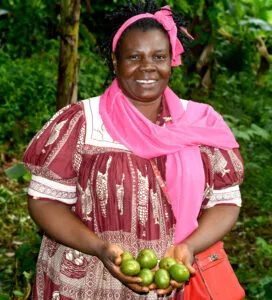
Cameroon’s tropical forests are among the world’s most important biodiversity hotspots, and their survival is critical to the well-being of millions of local and Indigenous peoples. Together with regional and international partners, the Rainforest Alliance has been working with rural communities in the Western Highlands and the country’s southern Mintom region, to address the urgent threat of deforestation and strengthen community rights over their valuable natural resources.
The long-term goals are to prevent large-scale forest conversion across 55,000 hectares and help local communities generate income from agroforestry systems, such as shade-grown cocoa and the planting of trees for timber and fruit production. The initiative is part of our larger efforts to promote integrated community forest management throughout the Congo Basin—to avoid forest conversion, restore degraded landscapes, and help communities earn more sustainable livelihoods.
Restoring the buffer zone around Guatemala’s Maya Biosphere Reserve
A model of sustainability, the nine community forestry concessions within Guatemala’s Maya Biosphere Reserve (MBR) have near-zero deforestation rates, but the same cannot be said for the reserve’s buffer zone, which spans 470,000 hectares. Just as the name implies, buffer zones are designed to be neutral regions that protect their neighboring reserves, but extensive cattle ranching and other land uses in the MBR’s buffer zone pose a growing threat to the wider ecosystem.
Building on the success of the Rainforest Alliance’s nearly 25-year collaboration with the MBR’s forestry concessions, our Forest Allies are working in the buffer zone to scale up the same model that has been so successful within the reserve itself. In tandem with government institutions and local residents, we have begun piloting agroforestry concessions to restore forests, recover soil fertility, and provide local communities with income and valuable natural resources, such as firewood. Already, seven tree nurseries have been established, corn and beans have been planted, more than 120 community members have received training and technical assistance in restoration practices, and 63 full-time jobs have been created—43 percent of which have gone to women.
Helping Indonesian forestry cooperatives safeguard their forests
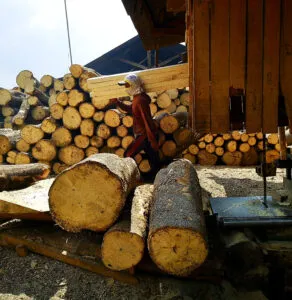
Expanding on work that began in 2016, the Rainforest Alliance has teamed up with three Indonesian forestry cooperatives and the Forest Stewardship Council (FSC) to connect more than 650 smallholders in Java and Lampung with potential markets for their wood products. Together, we are supporting the cooperatives and other community groups in their efforts to maintain and restore their forests, protect biodiversity, improve livelihoods, and adapt to the realities of climate change.
As part of this collaboration, we are also testing the FSC’s new forest-management certification standard for the region and helping these communities adopt practices that have the potential to earn them FSC certification for their acacia wood and non-timber forest products. Training and mentoring activities will cover not only environmental and social practices, but also the managerial aspects of running a group forestry business.
Supporting the rights and resources of local communities in the Colombian rainforest
Located in the Amazon Basin, Chiribiquete is the world’s largest tropical rainforest national park, but the buffer zone that surrounds the park has some of Colombia’s highest rates of deforestation. This degraded area of the Guaviare Department is of critical ecological and social importance—protecting biodiversity, maintaining a corridor for wildlife that travel to and from the park, and serving as the home for Indigenous peoples who consider Chiribiquete a sacred place.
Our Forest Allies are supporting the development of agroforestry enterprises in Guaviare. These enterprises, which are centered on the sustainable production of timber and non-timber forest products, are working to conserve biodiversity and guarantee the fundamental rights of these rural communities.
Building thriving Indigenous economies in Peru
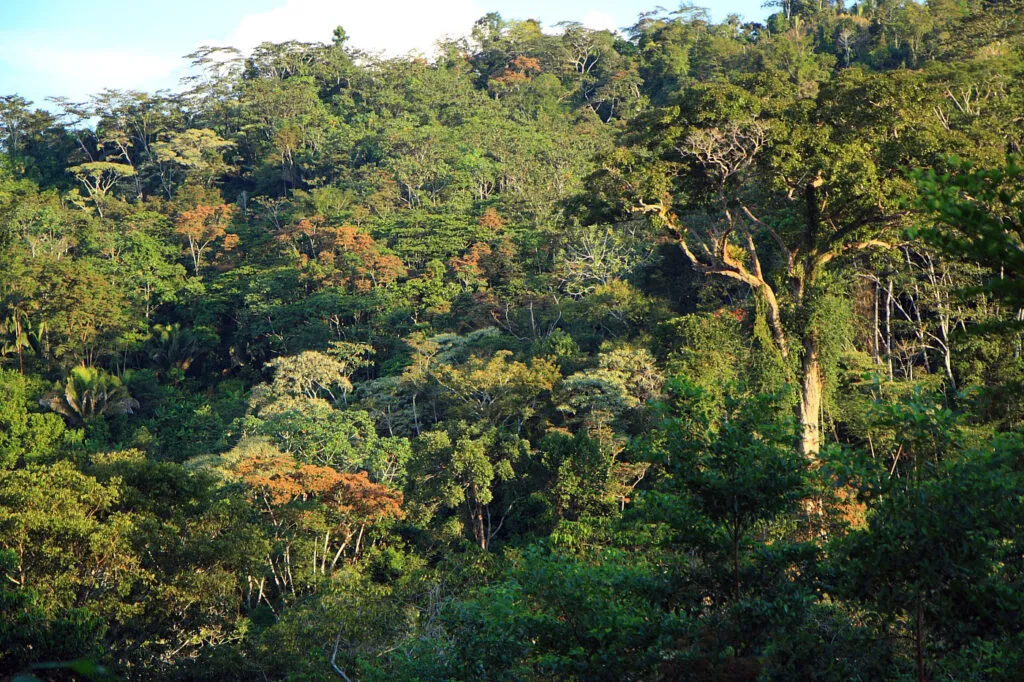
Peru’s Indigenous communities manage 14 million hectares of tropical forests, which protect wildlife, nurture medicinal plants, and provide a range of food and timber products. But when global markets concentrate their demand on a few select products—such as coffee, bananas, and palm oil—these native communities are driven to convert their protected areas, as a means of earning a living. The results are forest fires and the fourth-highest rate of deforestation in the country.
We are working in tandem with regional partners and 14 Indigenous communities in Peru’s San Martín region, representing more than 2,000 individuals, to improve their access to finance and support the development of sustainable farms and forestry businesses. To date, agreements have been signed, 22,000 forest seedlings have been distributed, and forest inventories and market analysis are being carried out to determine which non-timber products will be the most effective at helping rural communities lift themselves out of poverty while safeguarding the natural riches that surround them.
Driving sustainable rubber production forward in Indonesia
Natural rubber is the main crop for many communities in the Indonesian province of West Kalimantan, on the island of Borneo. Within the Sintang District alone, rubber production covers 125,000 hectares, but poor seed quality, plant diseases, and other factors have reduced production yields below those of Malaysia, Vietnam, and even other parts of Indonesia—which increases pressure on forested areas, as local communities seek other ways to generate income.
Though efforts are still in the early stages, our Forest Allies have brought together the Sintang government and forest communities to support the development of guidelines for sustainable rubber production. Baseline research is underway, and we have been meeting with farmers, government officials, local nonprofits, academics, and others to discuss potential field activities and marketing strategies to benefit smallholder rubber producers.
Check out the Forest Allies 2022 Annual Report to learn about our recent outcomes and impacts.

